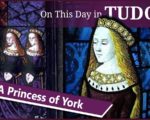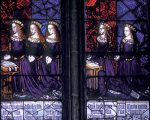
On this day in Tudor history, 15th November 1527, in the reign of King Henry VIII, a woman who called herself “the excellent Princess Katherine, Countess of Devon, daughter, sister and aunt of kings” died at Tiverton Castle in Devon.
She was Katherine of York, Countess of Devon, and she was the daughter of King Edward IV and Elizabeth Woodville, and the sister of Queen Elizabeth of York. Katherine was just forty-nine when she died. She had taken a vow of chastity after her husband’s death.
Let me give an overview of King Henry VIII’s aunt’s life and explain why she took her vow of chastity…
[Read More...]

